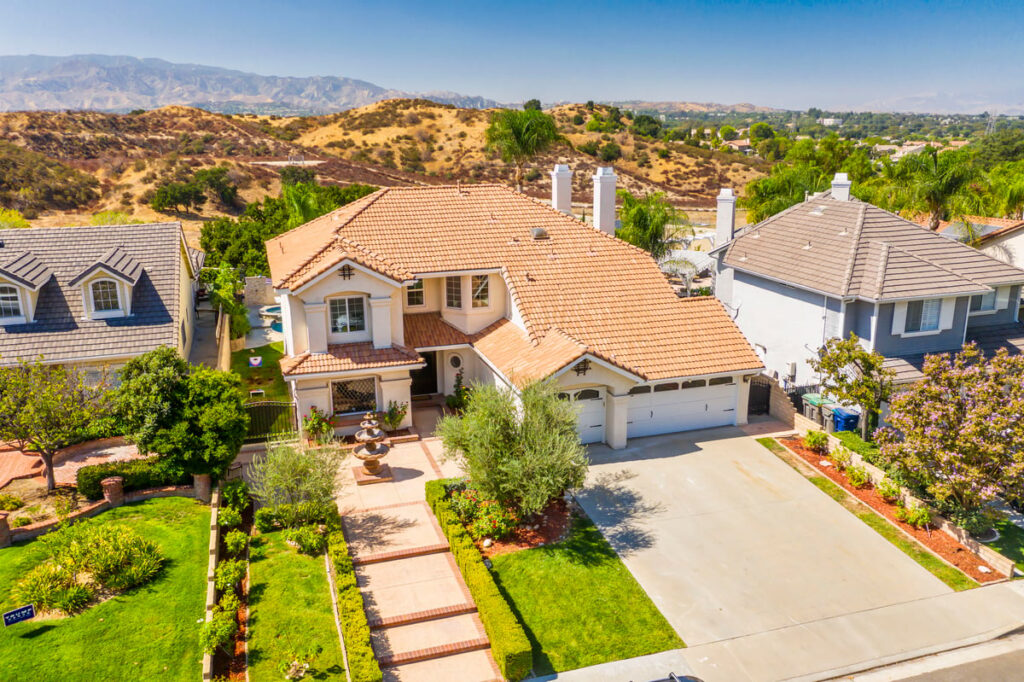If you’re a homeowner or considering buying property in Santa Clarita, CA, understanding the property tax rate is essential. Property taxes play a significant role in your annual expenses, so knowing what to expect can help you budget and plan effectively. Santa Clarita, known for its family-friendly neighborhoods and scenic surroundings, has its own unique property tax structure that you’ll want to explore.
Property tax rates in California are influenced by state laws, local levies, and assessments, making them vary from city to city. In Santa Clarita, these taxes fund critical services like schools, public safety, and infrastructure. Whether you’re a first-time buyer or a long-time resident, getting a clear picture of the local property tax rate ensures you’re well-prepared for your financial commitments. Let’s break it down so you can make informed decisions about your property investments.
Understanding Property Tax Rates
Property tax rates determine the annual tax levied on properties and directly impact your financial planning as a property owner. In Santa Clarita, CA, understanding these rates and their influencing factors is essential for budgeting effectively.
What Are Property Tax Rates?
Property tax rates represent a percentage of your property’s assessed value, used to calculate your tax obligation. In California, the base tax rate is capped at 1% of the assessed value under Proposition 13. Additional local assessments, such as school bonds or special districts, increase the total rate. In Santa Clarita, the combined rate ranges from 1.1% to 1.25% depending on the property’s location and applicable levies.
Example: A property assessed at $500,000 in Santa Clarita with a 1.2% rate incurs $6,000 in annual taxes.
Factors Affecting Property Tax Rates
Several factors influence property tax rates in Santa Clarita, creating variability across different neighborhoods.
- Property Value Assessments: Your property’s assessed value is based on its purchase price with a maximum annual increase of 2% as per Proposition 13.
- Local Levies: Bonds and assessments for schools, water systems, or infrastructure projects add to the base tax rate.
- Special Districts: Properties in areas with additional services, such as landscaping or lighting, incur extra charges.
- Exemptions and Discounts: California offers tax exemptions for properties owned by veterans, seniors, or other eligible groups, which can reduce the taxable amount.
Understanding these factors ensures you’re better equipped to anticipate variations in your property tax obligations.
Property Tax Rate In Santa Clarita, CA
Santa Clarita’s property tax rate is an important factor to consider when calculating homeownership costs. Understanding the current rate and its comparison to nearby areas can help you make informed financial decisions.
Current Property Tax Rate
Santa Clarita’s property tax rate generally ranges from 1.1% to 1.25% of the property’s assessed value. Under Proposition 13, California’s base rate is set at 1%, and additional levies for schools, public safety, and infrastructure typically make up the remainder. For example, if a property is assessed at $600,000 with a 1.2% rate, the annual tax would be $7,200. Specific rates vary based on the property’s location and applicable local assessments.
How It Compares To Neighboring Areas
Santa Clarita’s property tax rate is relatively comparable to other areas in Los Angeles County. While the average effective property tax rate in Los Angeles County is approximately 0.76%, the inclusion of local levies often pushes rates in Santa Clarita communities—such as Valencia, Canyon Country, Saugus, Stevenson Ranch, and Newhall—closer to 1.1%-1.25%. In contrast, regions with fewer special assessments tend to have lower overall rates.
Calculating Your Property Tax In Santa Clarita
Determining your property tax in Santa Clarita involves understanding the assessed value, applicable tax rate, and additional levies. The process helps you estimate annual costs and plan financially.
Components Of Property Tax
Property taxes in Santa Clarita consist of three primary components.
- Assessed Value: Calculated based on a property’s purchase price with a maximum annual increase of 2% under Proposition 13. For instance, a $500,000 home purchased in 2020 would have a maximum assessed value of $510,000 in 2021 if eligible for the increase.
- Base Tax Rate: Capped at 1%, this rate applies uniformly statewide. On a $600,000 property, the base tax amounts to $6,000 annually.
- Local Add-Ons: Additional voter-approved taxes fund schools, public safety, and infrastructure, often ranging from 0.1% to 0.25%. For a $700,000 property, these levies could add $700 to $1,750 annually to your tax bill.
Tools And Resources To Estimate Your Property Tax
You can estimate property tax using several tools and resources.
- County Assessor’s Website: Los Angeles County’s Assessor provides a calculator for approximate taxes based on assessed value and local rates.
- Tax Bills: Review your annual property tax bill, which lists all applicable rates and levies in your area.
Using these resources ensures accuracy while planning and determining total homeownership costs.
Why Property Tax Rates Matter
Understanding property tax rates helps you accurately budget for homeownership and ensures you’re aware of how these taxes shape your community’s infrastructure and services.
Impact On Homeowners
Property tax rates directly affect your annual housing costs. For a home in Santa Clarita assessed at $600,000 with a 1.2% tax rate, you’d pay $7,200 annually in property taxes. This recurring cost heavily influences your mortgage affordability, monthly payment calculations, and overall household finances. Keeping track of potential rate changes, due to reassessments or new local levies, lets you manage financial obligations effectively.
Role In Funding Local Services
Your property taxes fund critical local services in Santa Clarita. Schools, public safety departments like fire and police, libraries, parks, and infrastructure maintenance all rely heavily on these taxes. For instance, a portion of Santa Clarita’s property tax revenue supports improving roadways and upgrading city services. By paying property taxes, you contribute directly to maintaining and enhancing the quality of life in your community.
Tips For Managing Property Taxes
Managing property taxes effectively helps control homeownership costs and maximize potential savings. Implement strategies to address exemptions, track rate changes, and plan for long-term expenses.
Filing For Exemptions Or Reductions
Explore potential property tax exemptions or reductions to lower your tax obligations. Common exemptions in Santa Clarita include those for veterans, seniors, and homeowners with disabilities. For example, the Disabled Veterans’ Exemption offers up to $224,991 for qualifying veterans (in 2023 amounts). Check eligibility requirements and apply through the Los Angeles County Assessor’s Office. Submitting completed forms promptly ensures potential savings aren’t delayed.
Staying Informed About Changes In Rates
Monitor property tax rate updates to stay ahead of future increases. Santa Clarita’s rates may vary yearly due to new voter-approved measures or adjustments in assessed property values. Instead of navigating these changes alone, work with a trusted local expert like Holly Thompson. With deep knowledge of Santa Clarita’s real estate market and tax regulations, Holly can help you understand potential tax adjustments, plan, and make informed homeownership decisions.
Key Takeaways
- Santa Clarita, CA, property tax rates typically range from 1.1% to 1.25% of a property’s assessed value, including the statewide base rate of 1% plus local levies.
- Key factors influencing property tax rates include the property’s assessed value, local levies, special district charges, and applicable exemptions under Proposition 13.
- Property taxes in Santa Clarita fund essential services like schools, public safety, and infrastructure, contributing to community development and quality of life.
- Homeowners can estimate their property tax using resources like the Los Angeles County Assessor’s website, online calculators, or tax bills.
- Applying for exemptions, such as those for veterans and seniors, and staying updated on rate changes can help reduce tax obligations and manage homeownership costs effectively.
Conclusion
Understanding the property tax rate in Santa Clarita, CA is essential for managing your homeownership costs effectively. By familiarizing yourself with the factors that influence these taxes and utilizing available tools, you can better anticipate your financial obligations and plan accordingly. Staying informed about exemptions and local tax changes ensures you’re making the most of potential savings while contributing to the community’s growth and services. With careful planning, you’ll be well-equipped to navigate property taxes and make confident decisions about your investments.
Have questions about property taxes in Santa Clarita? Contact Holly Thompson for expert guidance on managing your homeownership costs, understanding local tax rates, and maximizing potential savings.
Frequently Asked Questions
What is the property tax rate in Santa Clarita, CA?
The property tax rate in Santa Clarita typically ranges from 1.1% to 1.25%, depending on local levies and assessments. California’s base property tax rate is capped at 1% under Proposition 13, with additional voter-approved taxes contributing to the total rate.
How are property taxes calculated in Santa Clarita?
Property taxes in Santa Clarita are calculated by multiplying the property’s assessed value by the tax rate, which includes the base rate (1%) and local add-ons. For example, a property assessed at $500,000 with a 1.2% tax rate incurs $6,000 annually.
What factors influence property tax rates in Santa Clarita?
Property tax rates are influenced by the property’s assessed value, local levies, special district charges, and exemptions available for certain groups like veterans, seniors, and disabled homeowners. These factors can cause variations in total tax obligations.
Why are property tax rates significant for homeowners?
Property tax rates are crucial because they directly impact annual housing expenses. They also fund essential local services like schools, public safety, parks, and infrastructure, improving community quality of life.
Can property tax rates in Santa Clarita increase over time?
Property taxes can increase if the assessed value of a property rises. However, under Proposition 13, the annual increase in assessed value is capped at 2%, limiting significant year-over-year tax hikes.
Are there exemptions available to lower property taxes?
Yes, exemptions are available for eligible groups such as veterans, seniors, and homeowners with disabilities. These exemptions can help reduce the overall property tax burden.
How does Santa Clarita’s tax rate compare to nearby areas?
Santa Clarita’s property tax rate (1.1%-1.25%) is higher than the Los Angeles County average (0.76%) due to local levies. Nearby cities like Palmdale and Lancaster have similar rates, while some Orange County areas may have lower rates.
What tools can I use to estimate property taxes in Santa Clarita?
You can estimate property taxes using the Los Angeles County Assessor’s website, online calculators on platforms like Zillow, or by reviewing your annual property tax bill for detailed breakdowns.
How can I plan for property tax costs when buying a home?
To plan effectively, consider the assessed value of the home, the estimated property tax rate, and additional local levies. Using online tools and consulting tax professionals can help avoid surprises when budgeting.
What are local add-ons in Santa Clarita’s property tax?
Local add-ons are additional taxes approved by voters to fund community services like schools and infrastructure. These charges typically range from 0.1% to 0.25% of a property’s assessed value.




